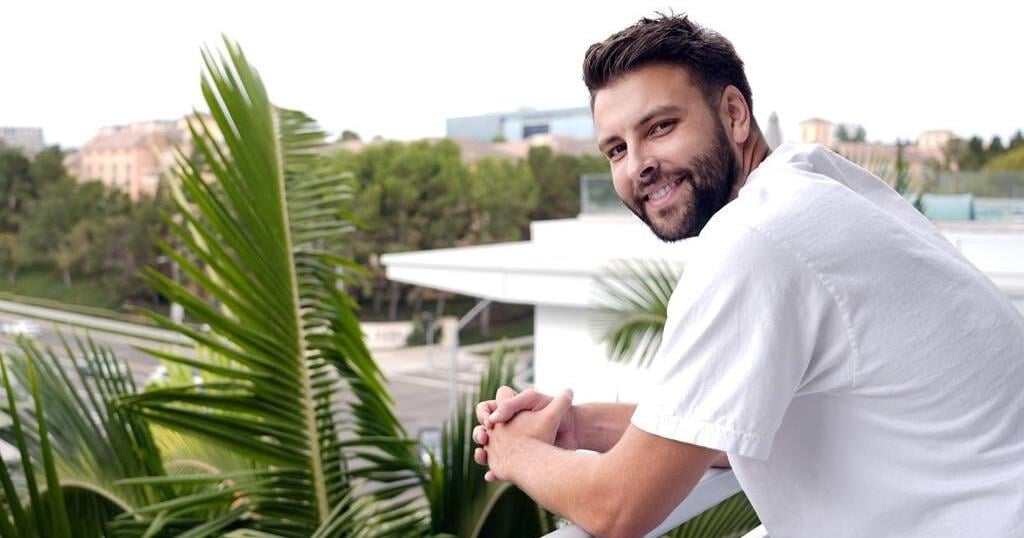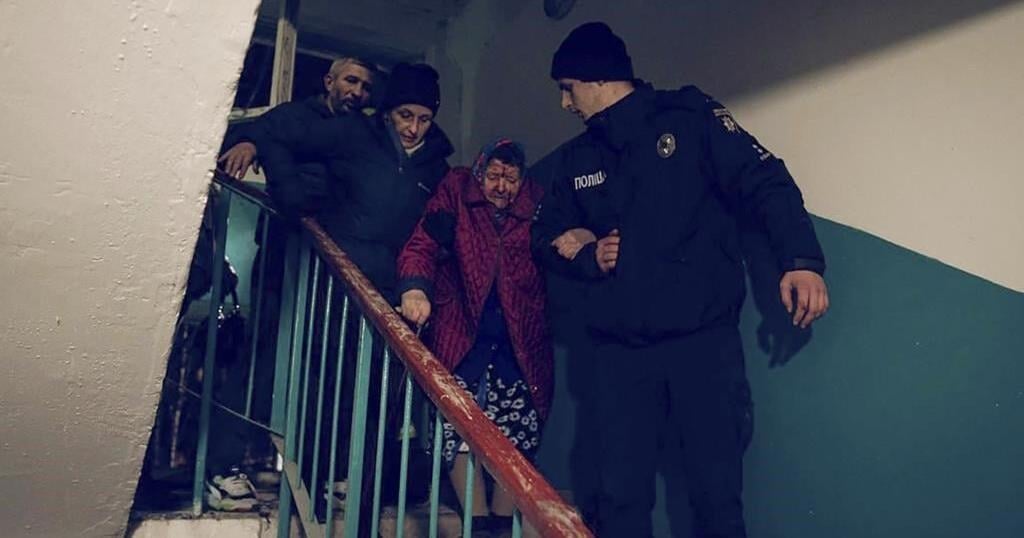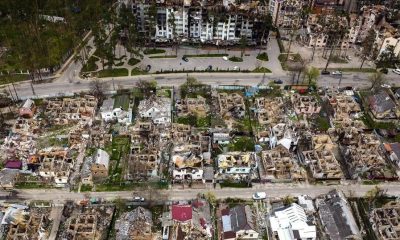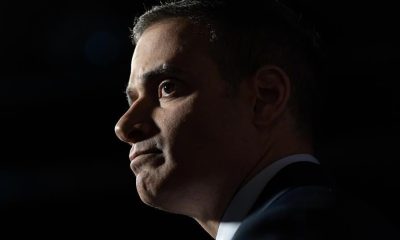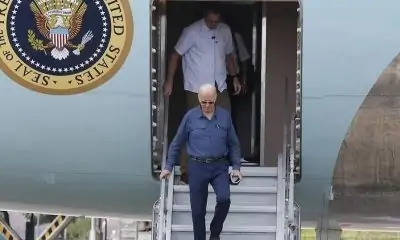Every Christmas growing up in Minnesota, Jimmy Darts’ parents gave him $200 in cash: $100 for himself and $100 for a stranger. Now, with over 12 million followers on TikTok and several million more on other platforms, philanthropy is his full-time job.
Darts, whose real surname is Kellogg, is one of the biggest creators of “kindness content,” a subset of social media videos devoted to helping strangers in need, often with cash amassed through GoFundMe and other crowdfunding methods. A growing number of creators like Kellogg give away thousands of dollars – sometimes even more – on camera as they also encourage their large followings to donate.
“The internet is a pretty crazy, pretty nasty place, but there’s still good things happening on there,” Kellogg told The Associated Press.
Not everyone likes these videos, though, with some viewers deeming them, at their best, performative, and at their worst, exploitative.
Critics argue that recording a stranger, often unknowingly, and sharing a video of them online to gain social media clout is problematic. Beyond clout, content creators can make money off the views they get on individual videos. When views reach the millions, as they often do for Kellogg and his peers, they make enough to work full-time as content creators.
Comedian Brad Podray, a content creator formerly known online as “Scumbag Dad,” creates parodies designed to highlight the faults he finds with this content — and its proponents — as one of the most vocal critics of “kindness content.”
“A lot of young people have a very utilitarian mindset. They think of things only in measurable value: ‘It doesn’t matter what he did, he helped a million people’,” Podray said.
Recording practices prompt questions of ethics
From the recording devices and methods down to the selection of subjects, “kindness content” — like everything on social media — exists on a spectrum.
Some creators approach strangers and ask them for advice or for a favor, and if they bite, they receive a prize. Others choose to reward strangers they see doing a good deed. Kellogg performs a “kindness challenge,” asking a stranger for something and returning it in kind.
Many of these strangers are unaware they’re being filmed. Some creators employ hidden cameras and aim to record subjects in a discreet manner. Kellogg said he wants to be as “secret about it as possible,” but asks for consent to share the video after the interaction. Kellogg said most agree because they look “like a superhero” after his challenge.
Another charitable content creator, Josh Liljenquist, said he uses a GoPro camera and tries to make recording “extremely noticeable,” adding, “Consent’s the biggest thing.”
Regardless of the recording method, some see the process as predatory.
“These guys always find someone with cancer or always find someone who can’t pay their bills because they’re stalking through underserved and poor areas and they’re just sort of waiting,” Podray said. “Looking through the parking lot like, ‘He looks pathetic enough’.”
Karen Hoekstra, the marketing and communications manager for the Johnson Center for Philanthropy, studies TikTok-based influencer philanthropy and says the videos, at times, take advantage of their subjects.
“The model of the man on the street walking up and approaching a stranger and handing them money is — we’ve all heard this phrase, terrible as it is — it just strikes me as poverty porn,” Hoekstra said. “It’s exploitation.”
Calls of exploitation often come when creators feature the same people across multiple videos, especially when they appear to be homeless or have a drug addiction. Liljenquist features some people frequently and maintains that his recurring subjects are like his “best friends.”
One user commented on an Oct. 5 video that recent content feels like Liljenquist is “playing case worker for views,” as he posted several videos of a woman who followers suspect is struggling with a drug addiction. He records himself bringing her food, giving her a ride in his Tesla, and asking her questions that often get one-word responses.
Liljenquist said criticism doesn’t bother him because he knows his intentions are good.
“I love these people,” he said. “They love me.”
Lack of checks and balances
Some criticize the showmanship of “kindness content,” but visibility is crucial to the model that relies heavily on crowdfunding. Kellogg is known to start GoFundMe fundraisers on behalf of his video subjects, usually bringing in tens of thousands of dollars in viewer donations.
Kellogg, Liljenquist and scores of other creators also use their personal accounts on payment apps like Venmo, CashApp or PayPal to accept donations.
Tory Martin, also of the Johnson Center as its director of communications and strategic partnerships, said transparency about donations is “not an option if it’s just going to an individual.”
Although these creators aren’t held to standards and regulations like nonprofits, Liljenquist said he feels donor dollars go much further in his hands than in the hands of traditional organizations, which he said are “designed for failure.”
“Nonprofits — not all of them, there are some good ones — but I would just suggest you do your homework on the nonprofits that you are giving money to because there’s a good amount of them who take advantage of the system,” he said.
Some creators have set up nonprofit organizations or foundations to support their work, but that is not a widespread practice.
Podray said he is “100% sure” some creators “take a rake or that there’s some sort of nonsense going on.” He also maintains that select creators hand out fake money to cash in on the trend.
Kellogg said seeing fraudulent or exploitative videos is tough for him, worrying, “My gosh, every Facebook mom just fell for this and thinks it’s real.”
New wave of philanthropy
While controversy swirls around these videos in some online circles, they are part of a hugely popular social media trend with millions of supporters and thousands who are compelled to donate after watching.
Although Hoekstra has concerns about some creators’ methods, she said the introduction to charitable giving these videos make for young people is valuable.
“Anything that can present philanthropy to them in a new way and make it accessible and make it exciting I think is a good thing,” she said. “Obviously, there’s going to be a learning curve, but I think it’s really exciting to see philanthropy be so accessible and understandable and embraced in these new spaces and in new ways.”
Some skeptics have become supporters. Kyle Benavidez said he used to see “kindness content” on social media and think it was fake. But after his mother was featured in one of Kellogg’s recent videos and a GoFundMe Kellogg created for her raised over $95,000 to support their family while her husband is in the hospital with cancer, he said Kellogg’s online persona is true to his real-life character.
“There’s a chapel in the hospital and I always go there every morning just to pray. ‘Hopefully something happens.’ And then Jimmy came to our lives,” Benavidez, 20, said. “It’s like God sent him.”
Kellogg shows no signs of slowing down his philanthropic work any time soon and rolls out videos across his social platforms almost every day. Still, he says doing good deeds on camera only matters if he and his peers keep it up when the cameras aren’t rolling.
“You can fool people all day and you can make money and do this and that, but God sees your heart,” he said.

